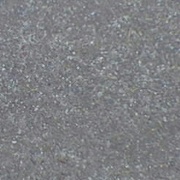Difference between revisions of "Cement"
Jump to navigation
Jump to search
(username removed) |
|||
| Line 2: | Line 2: | ||
== Description == | == Description == | ||
| − | 1) A strong adhesive. Examples are [ | + | 1) A strong adhesive. Examples are [[rubber cement]] and [[cellulose cement]]. |
| − | 2) A finely powdered inorganic material that can be mixed with water then dried to form a solid, durable mass. Examples of cement materials are [ | + | 2) A finely powdered inorganic material that can be mixed with water then dried to form a solid, durable mass. Examples of cement materials are [[plaster]], [[lime]], [[pozzolan cement]] and [[portland cement]]. |
| − | 3) A natural mineral material, usually chemically precipitated, that occurs in the spaces among the individual grains of a consolidated [ | + | 3) A natural mineral material, usually chemically precipitated, that occurs in the spaces among the individual grains of a consolidated [[sedimentary]] rock, thereby binding the grains together as a rigid mass. Common cements are [[silica]], carbonates, and iron oxides. |
[[File:KC.CementPlant_aerial.jpg|thumb|KC Cement Plant, aerial view]] | [[File:KC.CementPlant_aerial.jpg|thumb|KC Cement Plant, aerial view]] | ||
| + | |||
== Synonyms and Related Terms == | == Synonyms and Related Terms == | ||
Revision as of 18:09, 12 January 2014
Description
1) A strong adhesive. Examples are Rubber cement and Cellulose cement.
2) A finely powdered inorganic material that can be mixed with water then dried to form a solid, durable mass. Examples of cement materials are Plaster, Lime, Pozzolan cement and Portland cement.
3) A natural mineral material, usually chemically precipitated, that occurs in the spaces among the individual grains of a consolidated Sedimentary rock, thereby binding the grains together as a rigid mass. Common cements are Silica, carbonates, and iron oxides.
Synonyms and Related Terms
ciment (Fr.); caementum (Lat.); cement (Dan., Ned., Pol., Sven.); Zement (Deut.); cemento (Esp.); sement (Nor.); cimento (Port.);
Additional Images
Authority
- Submitted information Comment: José Delgado Rodrigues, LNEC, 2009.
- G.S.Brady, Materials Handbook, McGraw-Hill Book Co., New York, 1971 Comment: p. 172
- Ralph Mayer, A Dictionary of Art Terms and Techniques, Harper and Row Publishers, New York, 1969 (also 1945 printing)
- Richard S. Lewis, Hawley's Condensed Chemical Dictionary, Van Nostrand Reinhold, New York, 10th ed., 1993
- Dictionary of Building Preservation, Ward Bucher, ed., John Wiley & Sons, Inc., New York City, 1996
- Encyclopedia Britannica, http://www.britannica.com Comment: Cement. Retrieved May 25, 2003, from Encyclopædia Britannica Premium Service.
- Matt Roberts, Don Etherington, Bookbinding and the Conservation of Books: a Dictionary of Descriptive Terminology, U.S. Government Printing Office, Washington DC, 1982
- Encyclopedia of Archaeology, Glyn E. Daniel, ed., Thomas Y. Crowell Co., New York, 1977
- Van Nostrand's Scientific Encyclopedia, Douglas M. Considine (ed.), Van Nostrand Reinhold, New York, 1976
- Random House, Webster's Encyclopedic Unabridged Dictionary of the English Language, Grammercy Book, New York, 1997
- The American Heritage Dictionary or Encarta, via Microsoft Bookshelf 98, Microsoft Corp., 1998
- Wikipedia, the free encyclopedia, at http://www.wikipedia.com Comment: http://en.wikipedia.org/wiki/Cement (Accessed Mar. 1, 2006)
- Theodore J. Reinhart, 'Glossary of Terms', Engineered Plastics, ASM International, 1988
- Art and Architecture Thesaurus Online, http://www.getty.edu/research/tools/vocabulary/aat/, J. Paul Getty Trust, Los Angeles, 2000





